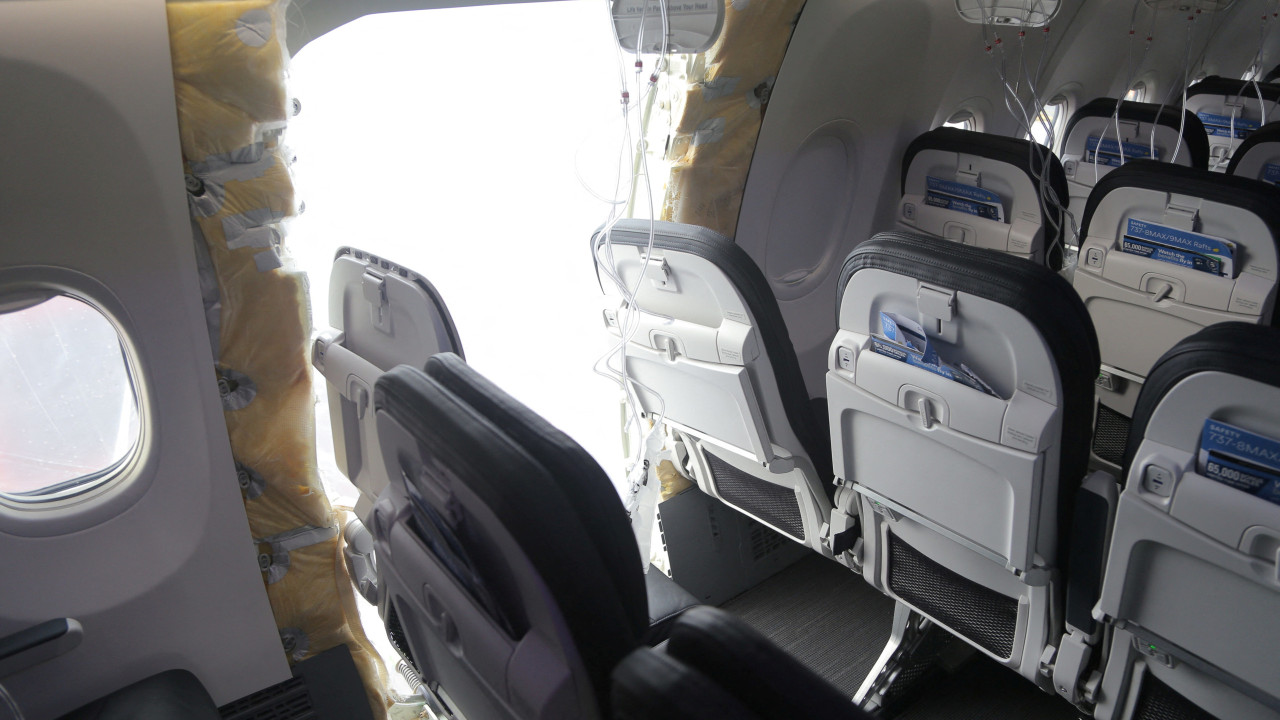
NOn Friday, passengers on an Alaska Airlines flight were surprised when one of the plane’s windows popped out during the flight.
The incident left everyone open-mouthed and the question that persists is: How did everyone survive the incident, which left them flying for a few moments with a hole in the plane?
According to some experts, who told the Washington Post, what happened could have had more serious consequences if the plane had already reached a higher altitude, where the compression of the device could have been much greater and even the passengers could have been thrown out of the plane. .
However (and fortunately) the plane was only at an altitude of 16 thousand feet.
“The pressure felt between 8,000 feet and 16,000 feet is not enough to feel that type of pressure and the force capable of throwing someone out the window”, begins by explaining Jeff Guzzetti, an accident specialist at the Administration. Federal Aviation and National Transportation Security.
What happened inside the plane?
Just a few minutes after taking off from Portland airport, the Boeing 737 Max lost a window, allegedly due to the screws being incorrectly placed.
Commercial aircraft cabins have pressurized air so passengers and crew can breathe easily and maintain normal oxygen levels, even when flying at a cruising altitude above 30,000 feet.
The internal pressure is kept stable by an automated system that controls the internal pressure of the cabin (to maintain a safe margin), and whether ascending or descending, the internal pressure is regulated so that whoever is inside the device feels the the same pressure you would feel if you were on land.
When, in flight, a plane loses a part and ends up with a hole, like what happened, the internal pressure of the device can undergo changes that could be fatal, which is why the placement of oxygen masks is essential.
According to Scott Wagner, assistant professor at the College of Aviation at Embry-Riddle Aeronautical University, there are three types of depressurization: gradual, rapid or explosive.
Why was there no damage?
In the case of the Alaska Airlines plane, the incident happened shortly after the plane took off. This means that the difference in pressure inside and outside the plane was not significant and that the pilot’s quick intervention was essential to prevent it from being more damaging. In addition, no one would be sitting in the seats next to the window that fell, thus preventing any victims from being recorded.
According to the Washington Post, there were records of minor injuries, a cell phone that fell from the device, and a passenger who was left without a t-shirt, which was sucked in by the force of the air. However, not one serious victim.
“At a higher altitude, anyone who was not belted or seated would have been immediately sucked into the opening,” says professor of mechanics and aerospace engineering Jeremy Laliberte.
If the incident had occurred at a higher altitude, says this expert, the consequences would probably have been much more catastrophic. The depressurization would be more explosive and even other parts of the plane could be ripped off.
This is not the only case
Although the case of this plane is attracting attention, remember that this is not the first time that a similar incident has happened.
The North American publication reminds us that planes are built precisely to be able to fly, even if they lose parts in flight.
In 1988, an Aloha Air plane lost much of its roof. A flight attendant died, but everyone else on board survived, after the pilot made an emergency landing.
The same happened in 2011, with a Southwest plane, with no reported casualties and in 2018 a plane from the same airline saw a passenger being sucked through a broken window, but after an emergency landing there were no more fatalities.
Read Also: Boeing CEO publicly acknowledges “error” after plane incident
All News. By the Minute.
Eighth consecutive year Consumer Choice for Online Press.
Download our free App.
Source: https://www.noticiasaominuto.com/mundo/2477225/o-que-acontece-quando-um-buraco-se-abre-num-aviao-em-pleno-voo


